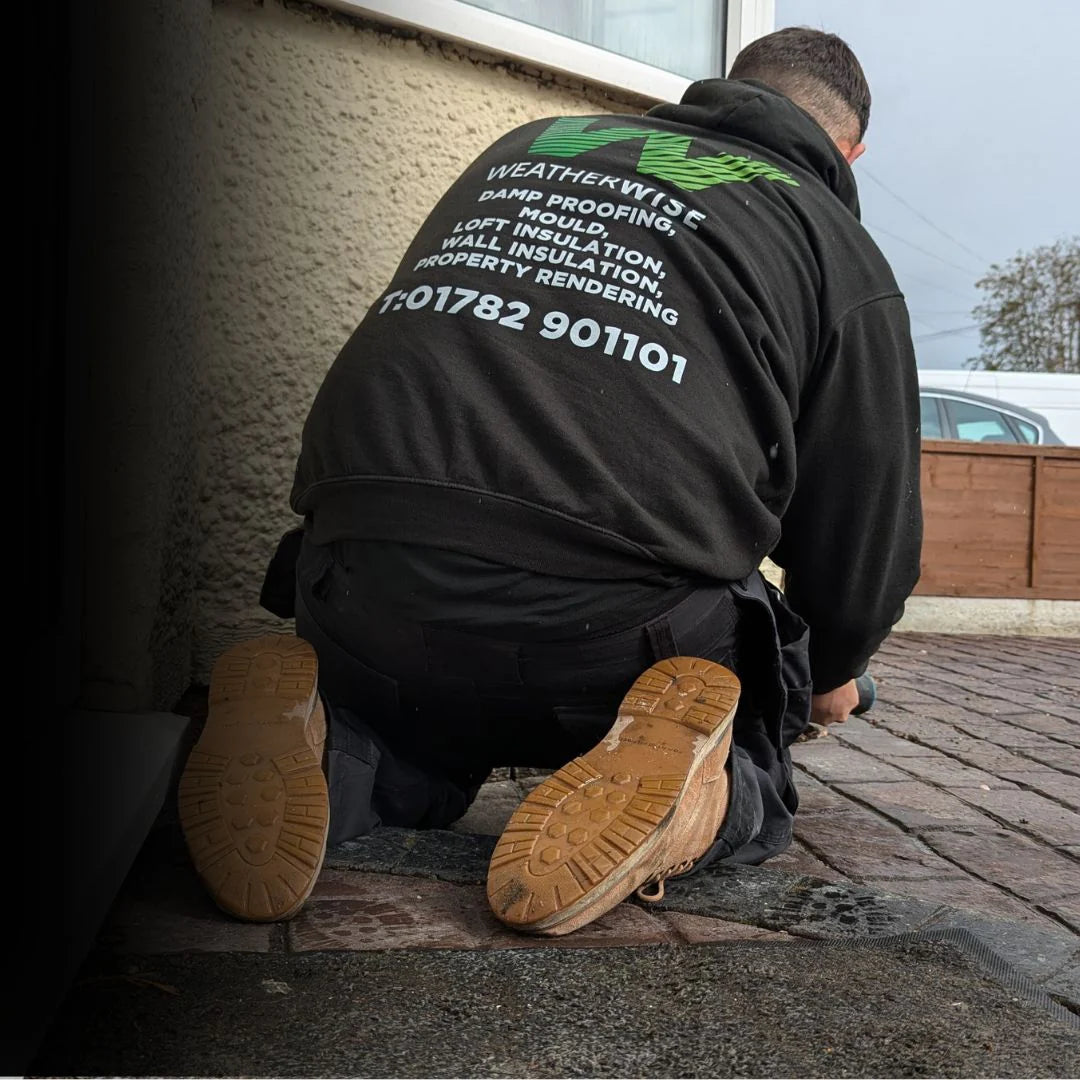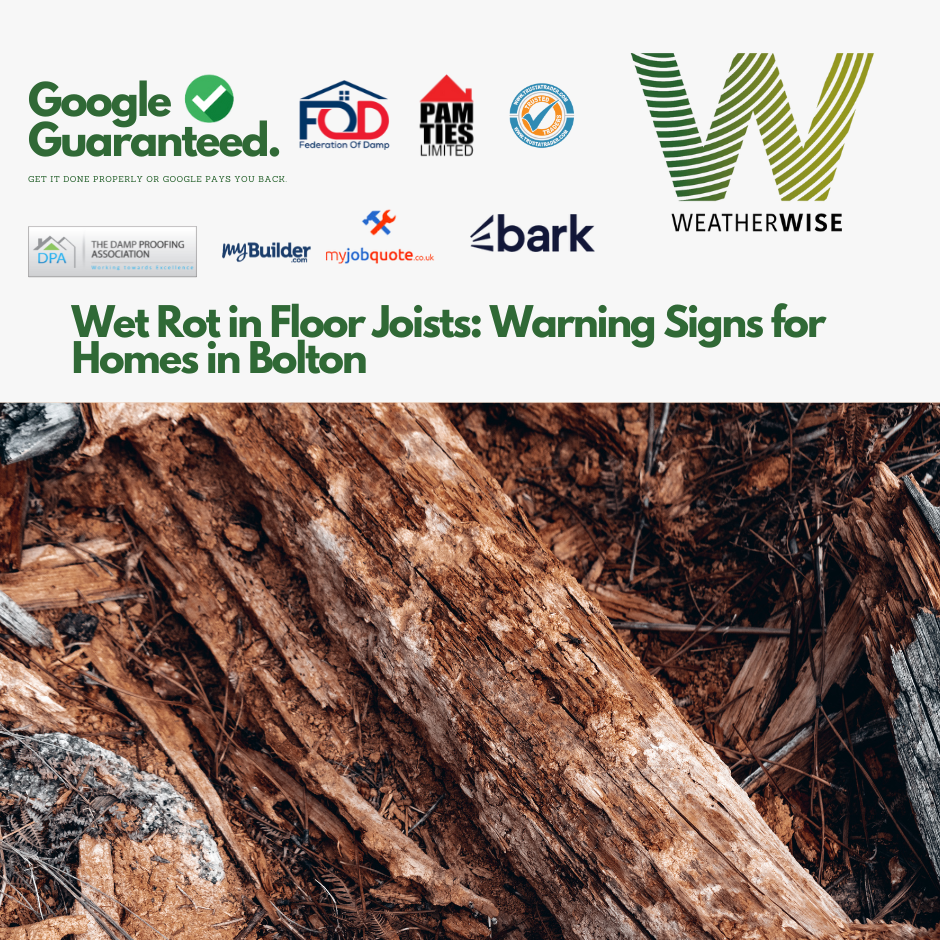Wet rot is a serious form of timber decay caused by prolonged exposure to moisture. In Bolton homes—particularly those with suspended timber floors or poor subfloor ventilation—wet rot often begins unnoticed until floors start to feel spongy or give way underfoot.
What Causes Wet Rot in Floor Joists?
Wet rot thrives when timber moisture content exceeds around 20%. This often happens due to:
-
Poor underfloor ventilation
-
Leaking pipes or rising damp
-
Blocked air bricks or ground-level bridging
-
High external ground levels
Without proper airflow, timber cannot dry out, and decay sets in.
Signs of Wet Rot in Floor Joists
Here’s what to look for:
-
Cracking or shrinking timber
-
Timber darkening or softening when probed
-
Musty odours in downstairs rooms
-
Flooring that feels springy or uneven
-
Fungal growth near skirting boards
If you spot any of these signs, it's essential to get a professional assessment.
Treatment and Repair
Timbers affected by wet rot must be assessed for structural integrity. Treatment often includes:
-
Removing and replacing severely affected joists
-
Improving subfloor ventilation (e.g., air bricks or PIV systems)
-
Applying fungicidal treatment to adjacent timbers
-
Lowering external ground levels or improving drainage
For homes in Bolton, our team at Weather Wise Solutions Limited can advise whether wet rot is the cause or whether alternative issues like rising damp or condensation are involved.
Prevention is Key
Once rectified, preventing a recurrence of wet rot relies on reducing the moisture source. This might involve improving ventilation, repairing leaks, or adjusting ground levels. We use proven products from PAM Ties and are members of the Damp Proofing Association, ensuring best-practice treatment.
Need help diagnosing wet rot in your home?
👉 Book a Free Survey for your Home in Bolton



